Solving the Zelda timeline in 15 minutes▲
September 26, 2018
Beautifully pieced together. My head hurts now though.
Beautifully pieced together. My head hurts now though.
A great video about why I think I love Overcooked so much. Mark Brown is one of those aforementioned creators by the way.
For the past 10 days I have been travelling through Japan and Thailand with my girlfriend and her family and it’s been a great experience. I think taking vacation time away from work and the normal routine of life is important and I do it as frequently as my job allows me to. Vacations also give me time to reflect. Time to look at where I am and where I want to be. With that reflection I’ve decided to make what I think is a pretty big leap, at least for me. I have decided to step away from consuming Reddit, Twitter, YouTube, Hacker News, and Facebook1 completely.
I have done this before, on a smaller scale (and I did see small benefits), but now I have decided to go cold turkey as much as is possible. I have implemented tools that block the above from being visited on my phone2 and intend to do so on my other computers when I get back home. I intend to do this until at least the end of the year, to truly give this a go.
There’s actually a couple reasons why I’ve decided to make this leap. The first is that I feel I’m not achieving the goals I set for myself at the beginning of this year. I have actually started a number of projects in the last year or so, this blog included, that have all just sort of languished. They’re still ongoing just, very, very, slowly.
I find this immensely frustrating. I know that it takes a long time for projects to mature, to truly flesh out an idea and make it a reality. But at the same time, when I look at the amount of work I have accomplished this year versus the number of memes I’ve read, or funny gifs I’ve seen or hours spent on YouTube or books I haven’t read I get scared. Where has my attention span gone that I can’t complete any meaningful task anymore without some external pressure (like needing a job)? Why do I feel the need to check what someone said about the new iPhone on Twitter? Why am I watching people play video games when I could be playing them myself? Why do I read Reddit comment sections full of meaningless fluff instead of reading the books I told myself I wanted to read?
Books I haven’t read is actually a good example of this. This year I had set myself a goal of reading 20 books and it’s nearing the end of September and I’ve read 7. My other projects are all about at the same place (I’m just not ready to talk about them yet). So something has to give.
The most obvious change to me is to remove all the little social media habits that have slowly crept into my life but now, somehow, consume it. Every hour (Half hour? Minute?) I find myself checking my phone, refreshing pages I’ve already seen hundreds of times. It takes just long enough to read all the new content that by the time I cycle back to the first page, oh, would you look at that, new content for my brain to enjoy, one tasty junk food bite at a time. This time the dog wasn’t tricked, wow, amazing. I wonder how thin that new Apple Watch really is. What did Trump do this time to piss off this person? So Rust is good for games? Neat.
I’ve been mulling this over these last few weeks and as I’ve said before I actually have implemented a smaller version in the past. The catalyst that finally convinced me however was that CGP Grey, an independent creator I greatly admire, has decided to do the same thing.
CGP Grey, a podcaster and YouTuber recently shared some of his feelings on this topic in a couple podcasts of his. Listening to Mike and Grey discuss their feelings on this topic on the latest episode of Cortex and also Grey and Brady discussing this on Hello Internet a few weeks ago has really helped me make this decision. There’s also a video on YouTube3 that Grey has made also discussing the topic. I challenge you to watch the whole thing, right to the end. Don’t worry, I’ll still be here when you get back.
In fact, I think I’ll be here even even more. At least that’s the whole point isn’t it? Time will tell I suppose.
Yes I am aware of the irony here given how you are likely to have found this post. I do have an RSS feed if you’d like. ↩
I have used 1Blocker to block Reddit, Twitter, and Hacker News on my phone. I deleted the Facebook app (not my account, just the app) which I never used anyways. For YouTube I have given a slight exception. I have unsubscribed from all channels that post content daily but I have remained subscribed to a few specific individuals that I feel are worth my attention. I also remain a YouTube premium subscriber because I hate ads and I use Play Music too. However, if I find myself getting pulled into the endless engine that is YouTube recommendations (which has happened to me in the past) I may have to step away from the entire platform altogether.
At the moment these blog posts auto share on Twitter but I will need to manually share this on Facebook. Step one when I get home is to update Static Fire to post to Facebook for me too. ↩
If you think that’s a lot of content I just dumped into your lap you’re right, and it’s really just the tip of the iceberg. ↩
A statement from Telltale’s CEO Pete Hawley to Ars Technica.
It’s been an incredibly difficult year for Telltale as we worked to set the company on a new course. Unfortunately, we ran out of time trying to get there. We released some of our best content this year and received a tremendous amount of positive feedback, but ultimately, that did not translate to sales. With a heavy heart, we watch our friends leave today to spread our brand of storytelling across the games industry.
This makes me sad as I really enjoyed the Sam and Max series. I never played any of their more modern games, although I had heard they were excellent. Maybe that’s part of the problem.
Welcome to a new project and blog post series I’m calling Making a Rob Boy. This is a project I’ve actually been working on for the last few months or so during my spare Sundays and I think it’s about time I document what I’ve been up to as well as to share my experience if others might be interested.
The goal is to create a portable Raspberry Pi “Gameboy” but I don’t just want to follow some tutorial or buy pre-made parts online. I intend to accomplish as much of this project myself as I can mostly because I want to but also as a learning experience. While I am computer engineer I mostly focus on software at my day job and I’ve never actually designed or made a PCB before. Recently though, I’ve joined a team at Amazon working with robots. Seeing the powerful combination of hardware and software is inspiring and I decided I waned to learn more about the world of hardware while staying in line with my true passion which is, of course, video games.
My intention with this is to post once a week as a kind of update on progress as well as a motivator for myself to actually make forward progress. With all that stuff out of the way lets get into what will be the heart of the Pi Boy.
The Raspberry Pi Compute Module (CM3) is just like a Raspberry Pi but without all that clunky I/O hanging off the side. That means the CM3 is way more portable than a regular Raspberry Pi but it also means you need to design your own motherboard for it with all of the I/O your specific project needs. The reason I chose the Raspberry Pi for this project is that it already has great support for running games and it has a lot of software support ready to go out of the box to support different peripherals, which is great.
So what does our project need? What makes a Rob Boy? For starters, I think there’s some definite non negotiable pieces that need to go into the design:
That seems like a pretty straightforward list. What else might be nice to have though?
So that’s it! Requirements laid out it’s time to start shopping around for parts and seeing what’s available. Up next we’ll be diving into the Raspberry Pi Compute Module I/O board and seeing if we can get a display to work. Stay tuned!
Finally.
What has become abundantly clear to me is that I all of the games I have played so far have been deeply considered by their designers. They are like endless Pixar movies filled to overflowing with moments of wonder and wild imagination
This is a great description of what it’s like playing Nintendo games on the Switch. You can really tell Nintendo has a huge passion for making great games.
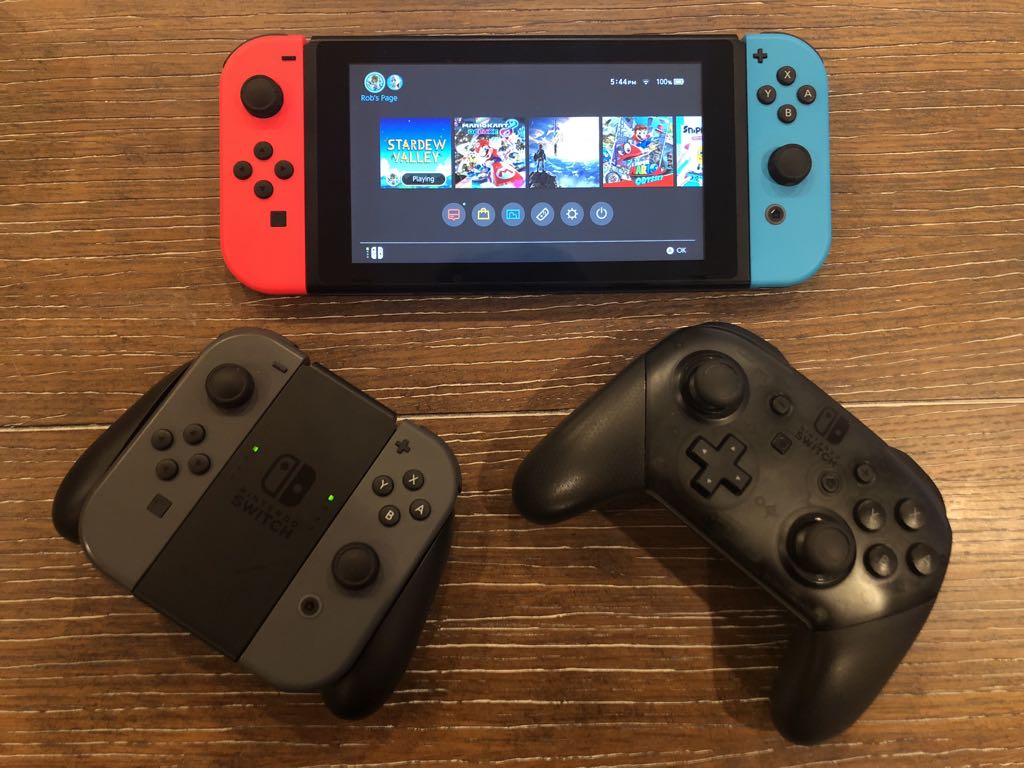
It hasn’t even been a year and the Nintendo Switch has now fully consumed my gaming life. All other gaming machines, whether they be consoles, PC, or my phone, have taken a back seat to the Switch. The pull of a console that can play full games at home and those exact same games on the go is just too strong to ignore. Not only is the console’s portability amazing it’s also a really well done piece of hardware, with a beautiful screen, powerful Joy Cons, and an excellent docking solution. The Switch is easily the best hardware Nintendo has put out since the DS Lite in 2006.
That said though, hardware is just one piece of the puzzle when it comes to what makes any gaming platform truly a must have, and the games that have come out for the Switch in the last year have just solidified how amazing this console is. Here’s a list of my favourite games that are available on the Switch as of today.
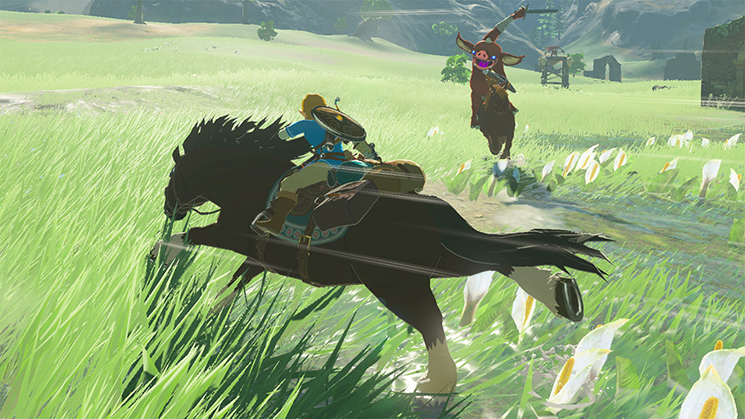
It’s no secret that in order to make a successful games console it helps to have that one absolute must have, killer title. Halo made the Xbox and Breath of the Wild makes the Switch. I don’t even think I need to be telling you this, with a 97 on Metacritic and multiple awards last year, this game was such a success it’s nuts.
I think what truly made me fall in love with Breath of the Wild was just how different it was from the most recent entries in the franchise. Having played all of the major titles I was fully prepared for another 4-7 dungeon and puzzle adventure with maybe a sidequest here or there and probably some annoying helper/companion to annoy you. But the go anywhere, do anything, non-linear exploration and discovery gameplay that Breath of the Wild delivered kept me playing for well over 100 hours and I bought the DLC immediately just so I could go back for some more. Breath of the wild is so refreshingly different from any past Zelda or even other open world games that I expect it to be influencing games and gaming for years to come.

Another launch title alongside Zelda and this one came as a welcome surprise. I fully expected Snipperclips to be a throwaway game much like 1-2-Switch was but it wasn’t. What it was instead was a short but great 2 player puzzle game about working together to solve physics based puzzles. The cute charm of the little Snipperclips figures and the nice relaxing nature of a stress free puzzle game makes Snipperclips great.
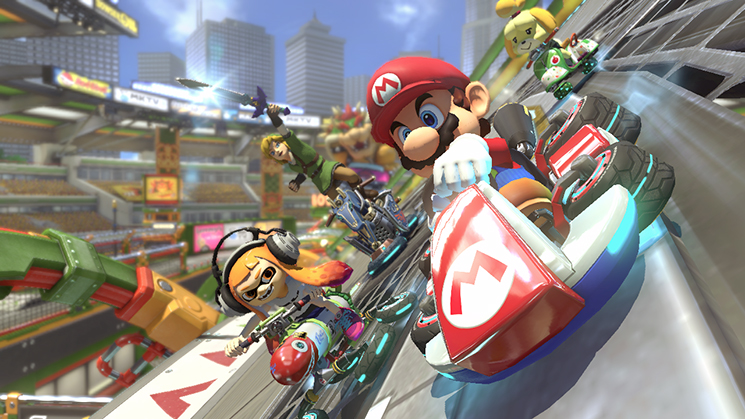
I’ll be honest, I wasn’t thrilled about paying another $60 for a game I already had purchased. I can understand the full price tag for the port because most Switch owners never owned a WiiU but I do wish Nintendo had found a way to reward their most loyal fans instead of just charging them full price again. That said though, Mario Kart 8 is easily the best entry in the franchise to date and the Deluxe version adds just enough to make it feel refreshed for the switch. I just spent a Saturday playing Mario Kart 8 with a friend and I can tell you I don’t for one second regret the double dip into this great game. Given the inbuilt capability for 2 player gaming on the Switch, Mario Kart 8 Deluxe is a solid entry in any Switch owner’s library.
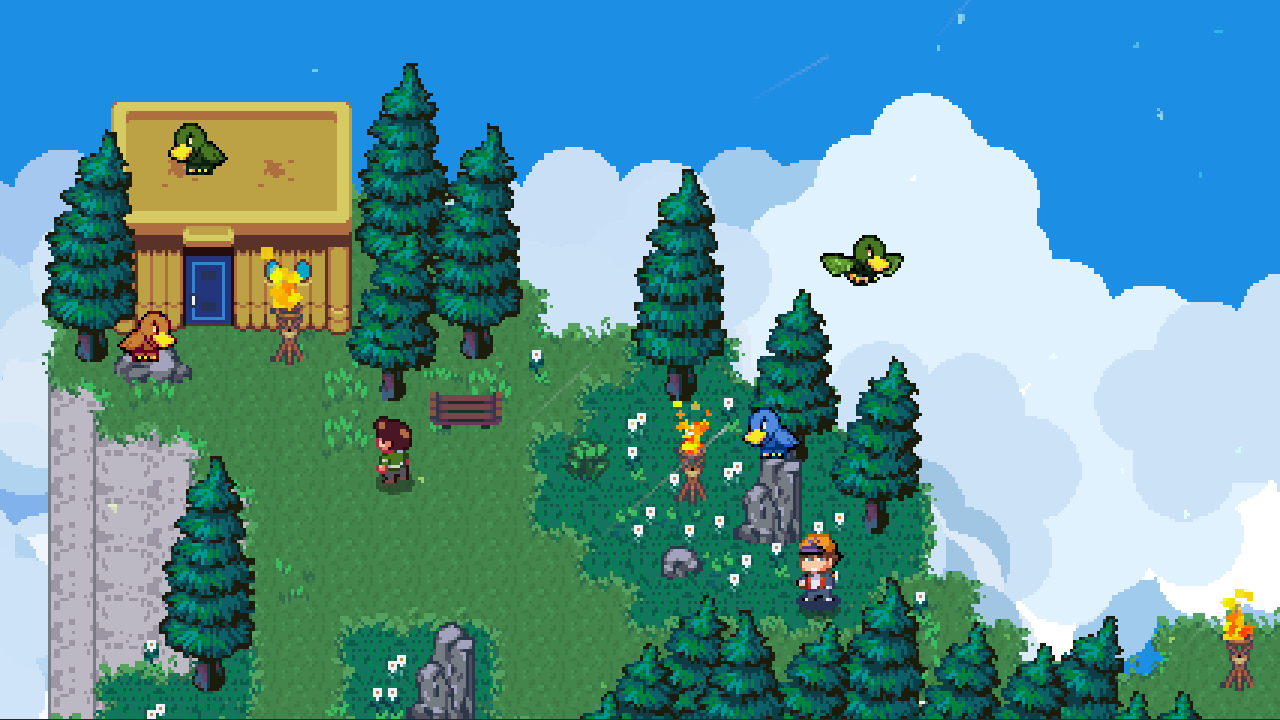
A nice relaxing RPG about golfing and following your life’s dreams. Another non-Nintendo title that surprised me last year. I’ve already reviewed Golf Story so I’ll send you over there for my full review.
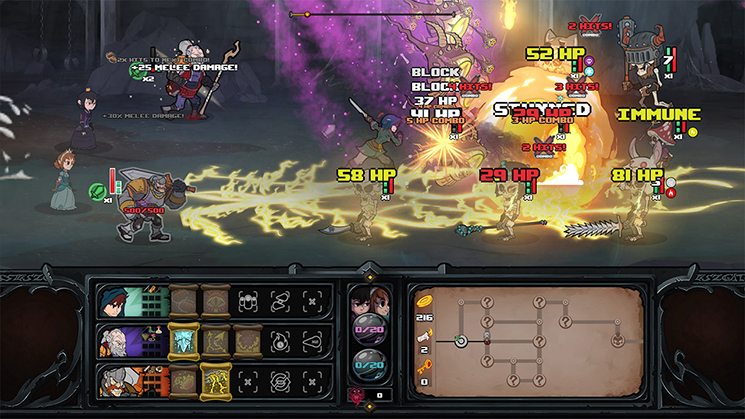
Has Been Heroes was an odd one but for a certain type of gamer it’s great. With basically no story to speak of the gameplay is what needed to carry Has Been Heroes and it does so very well. With a nice mix of rougelike, RPG, a cool cast of playable characters, and a really innovative combat system Has Been Heroes is a game we don’t get to see too often. I think the game does have too steep a learning curve but despite that I’m now 20 hours in and I barely feel like I’ve scratched the surface of this game.
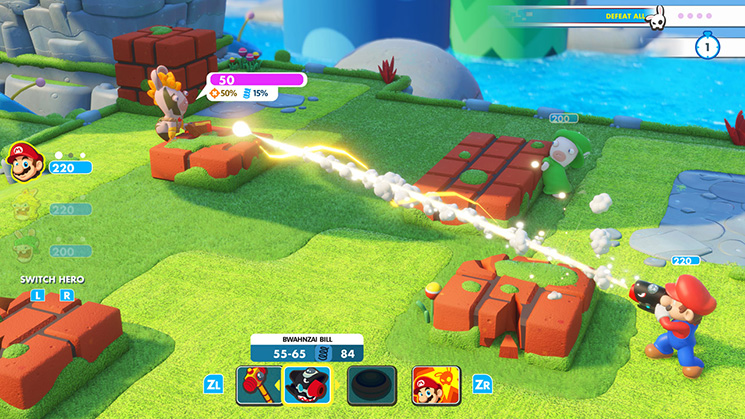
If you had told me I would be talking about a Rabbids game on this list last February I would have laughed you out of the room. Yet, here I am to tell you that Mario + Rabbids Kingdom Battle is worthy of your attention. At first blush it may look like a cheap knock off of X-COM and it very well could have been, but it’s really not. Mario + Rabbids does simplify some things from it’s contemporaries but at the same time it manages to streamline and de-stress what can sometimes be a very “micromanagy” and stressful time.1 Mario + Rabbids has lots of characters to play around with, level up, equip with fun tools, and it also has tons of enemies, maps, and colorful worlds to pit them against. I had a great time with Mario + Rabbids and I’m excited to see where they take this combo in the future.
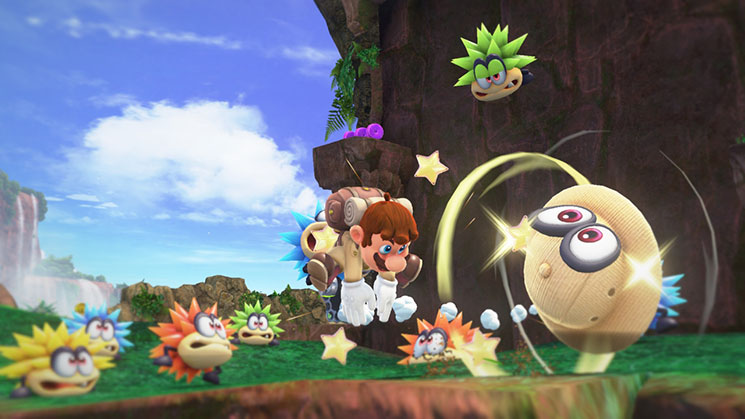
If you were unconvinced that Breath of the Wild is the system seller I say it is then how about another system seller? Mario Odyssey doesn’t feel like the complete revolution for the Mario series that Breath of the Wild was for the Zelda series but more like a refinement of that pure Mario experience we have come to expect from Nintendo. None of the forced camera angles from 3D World, none of the 2D remake stuff from New Super Mario Bros. Just pure 3D platforming fun. Odyssey is Nintendo at its best, again. The addition of Cappy and everything he brings to platforming Mario games is going to make me really sad if he doesn’t come back again for the next title. I think that says a lot because I definitely wasn’t waiting around for F.L.U.D.D. to make a return. With tons of worlds to run around in and maybe, somehow, too many moons to collect, Super Mario Odyssey was an amazing statement of what makes Nintendo and Mario great.
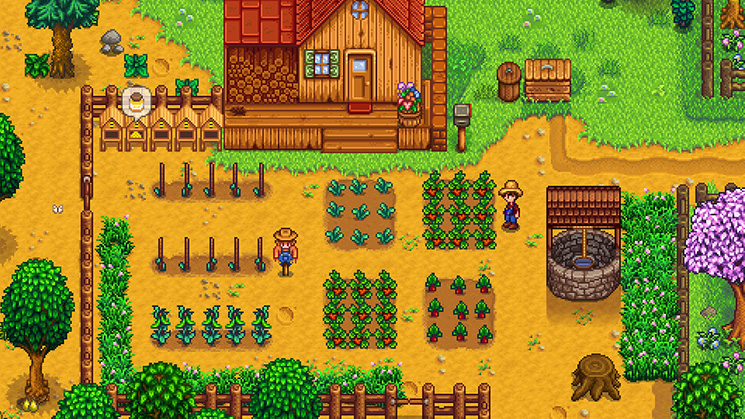
Not a Switch exclusive and definitely not a surprise but welcome nonetheless as another title to add to my Switch catalog. It took me a while to pick this one up just because I knew when I did it was going to eat all of my free time, and I was right. So far I have nothing but good things to say about this game; the simple but deep farming gameplay, the cast of characters and the music. It’s all stellar. If you ever wondered where Harvest Moon went, well, it’s right here.
To be fair, that might actually be the point of X-COM. ↩
I discovered data oriented design a few years ago and kind of fell in love with the idea. Unfortunately at my day job I never really get much of a chance to flex my data oriented design muscles or to really play around with the concepts since it tends to fly in the face of typical OO design.1 On top of that one of the most frustrating things about trying to play around with DOD is that there are no modern languages I know of that provide data oriented containers out of the box, meaning just playing around with DOD requires quite a bit of work on the part of the learner.
This post is an attempt to rectify that, for C++ users at least. I hope the following SoA container helps you on your journey of learning about all things data oriented design. I think it might also be a decent introduction to variadic templates which I know can always be a little daunting, at least for me. Finally, full source is available on GitHub.
There’s probably a very high chance you’re wondering what the hell it is I’m even talking about right now. Let me try to explain as briefly as I can why you might want a structure of arrays. First, lets consider the very commonly used alternative, an array of structures, a.k.a. a plain old object:
class Person {
int id;
const char* name;
int age;
int health;
int food_amount;
const char* weapon;
};
Now, in any old game you’re very likely not to have just one Person but many people (probably hundreds or even thousands), and so you create an array to store your people in:
std::vector<Person> people;
people.push_back({ 0, "Gandalf" , 2019, 999, 0, "staff" });
people.push_back({ 1, "Frodo" , 31 , 30 , 1, "ring" });
people.push_back({ 2 ,"Samewise", 61" , 40 , 2, "sword" });
Great. We did it. We’re the best! But no, that’s not quite true in this case.2 This way of storing data can actually be really inefficient in cases where we only care about certain parts of the data. For example, lets say our fellowship rests for the night and they all gain a little bit of health.
for (auto& person : people) {
person.health += 10;
}
Well that was easy, but lets think a bit about what our program is actually doing here. In order to update our fellowship’s status we need to read all of the data of person 0, add 10 to their health, read in the next person’s data, add 10 to their health, and so on. Ok, that’s fine, but how much data is a Person?3 Well, if we’re on a 64 bit system then it would be four int at 8 bytes each and two const char* at 8 more bytes each. So 6 x 8 = 48 bytes. Does this matter? Well, when it comes to data oriented design it’s very important to remember a few things. Cache lines are small (on the order of 64 bytes), and reading from memory is slow, very very slow.
So what’s actually happening here is:
Which brings us to a very scientific total of: 301.5ns
So what’s actually happening here is our program is just waiting around on memory reads. Very little useful work is happening which isn’t really what we intended at all! I hope you can see organizing your data this way can be very wasteful, especially if our Person class keeps growing. Why should we read in id, name, age, food_amount, and weapon every time we want to update health? We should just read and update health only.
Of course there’s another way to lay out our data, unfortunately it just doesn’t come in the box that is the C++ Standard Library. Let’s build exactly what we have above but first we’ll turn our data 90 degrees.
struct People {
std::vector<int> ids;
std::vector<const char*> names;
std::vector<int> ages;
std::vector<int> healths;
std::vector<int> food_amounts;
std::vector<const char*> weapons;
};
People people;
people.ids.push_back(0);
people.names.push_back("Gandalf");
people.ages.push_back(2019);
people.health.push_back(999);
people.food_amount.push_back(0);
people.weapon.push_back("staff");
// Repeat for Frodo and Sam
Ok, that’s a lot of of typing and I didn’t even add our whole party yet! All this code does let us see that the individual properties of Person have been moved into their own arrays. In fact, the Person class itself it gone, and we no longer have a need for the concept of a single Person. All of our data manipulations will now happen in the context of everyone at once which is what we were doing anyways. Let’s look at what happens when our fellowship rests now.
for (auto& health : people.healths) {
health += 10;
}
Mostly the same deal as above but this time we’re only accessing health data, exactly the 8 bytes we care about. And the memory accesses overall? Since all of our healths fit in one cache line (24 bytes), it should look something like this:
“Total”: 101.5ns
Great! We theoretically sped up our code by a huge factor, and it only gets better the more people we have in our fellowship.
Wouldn’t it be nice if C++ had a “Structure of Arrays” container like it had vector and unordered_map. Well, I wrote one, and it’s usage looks something like this:
enum Person {
kId,
kName,
kAge,
kHealth,
kFoodAmount,
kWeapon
};
using People = SoA<int, const char*, int, int, int, const char*>;
People people;
people.add(0, "Gandalf" , 2019, 999, 0, "staff");
people.add(1, "Frodo" , 31 , 30 , 1, "ring");
people.add(2 ,"Samewise", 61" , 40 , 2, "sword");
for (auto i : people) {
people.get<kHealth>(i) += 10;
}
I think that looks pretty good compared to the manual way of laying out a structure of arrays above. It gets even better when you realize we can be smarter than a bunch of unrelated vectors and instead of 6 mallocs we can allocate all the memory we need in one go. Internally it’s basically the same as our structure of arrays above. All healths live in one array and all names in their own array and so on.
Of course, you do lose some things with this method of structuring data. For one, it can be very difficult to find one specific “Person” when you need them. This can be solved a number of ways and my personal choice right now is to have a MappedSoA type that contains a map of Id to “Index” into the arrays themselves. This means that we have traded efficient access across all elements for a more inefficient lookup of single elements which would now be a table lookup followed by a random array access. But of course the whole point of having an SoA structure in your toolbox is just that, it’s another tool in your toolbox. I’m not mandating that all of your memory be laid out as structures of arrays but I also don’t think all of your data should be laid out into arrays of structures like OO design might lead you to believe.
This post ended up way longer than I thought it would and I didn’t even get to the code yet! Stay tuned for part 2 where I’ll dive into the code and hopefully explain what is going on in there.
Great story by Chris Bratt.
“That was crazy,” said Soliani. “Because we worked even harder and I almost believed I had a heart attack. I went to the hospital. asking them to check my heart. Everything was fine, but I told them I’d been working Saturday and Sunday until 2AM and they told me: you’re a moron and I needed to chill out. After I knew that I had no problem, I went back to work.”
No one can ever say making great games is easy.
I’ve been playing Super Mario Odyssey for the last few days and it’s a ton of fun. The movement and jumping feels great and the extra little secrets like these just make you feel really good every time you find them. Definitely pick it up if you haven’t already.
A good deep dive into what went wrong with Visceral’s Star Wars game. It sounds like Visceral were put in a tough spot.
Ragtag was a project sunk by many factors, including a lack of resources, a vision that was too ambitious for its budget, a difficult game engine, a director who clashed with staff, a studio located in one of the most expensive cities in the world, a reputation for toxicity, multiple conflicts between Visceral and EA, and what can only be described as the curse of Star Wars.
EA mandated the game engine, the crazy high expectations of beating Uncharted 4 and Naughty Dog at their own game and a forced multiplayer mode. I still put all the blame for this in EA’s hands. They mismanaged a great studio. What a shame.
“We just keep our heads together, and focus on making a really good single-player game… Doing our thing is what makes the game great.”
In honour of Visceral Games closing this week I wanted to share Mark Brown’s excellent Dead Space series. If you’re curious about why Visceral is no more I think this series might help explain it.
Buried four paragraphs into an article filled with corporate bullshit about “bringing a Star Wars story to life.”
Our Visceral studio will be ramping down and closing, and we’re in the midst of shifting as many of the team as possible to other projects and teams at EA.
You know where their true intentions lie in the next paragraph.
Lastly, while we had originally expected this game to launch late in our fiscal year 2019, we’re now looking at a new timeframe that we will announce in the future.
No gamer gives a shit about your fiscal year 2019 EA.
I’m a little late to the party but I just recently finished listening to the first episode of Designer Notes with Rob Pardo as the guest. Rob was the Chief Creative Officer at Blizzard Entertainment and very likely helped design your favourite Blizzard game.
I thought it was a really good listen. I always find in interesting to learn how other people think and see the world. Definitely subscribed.
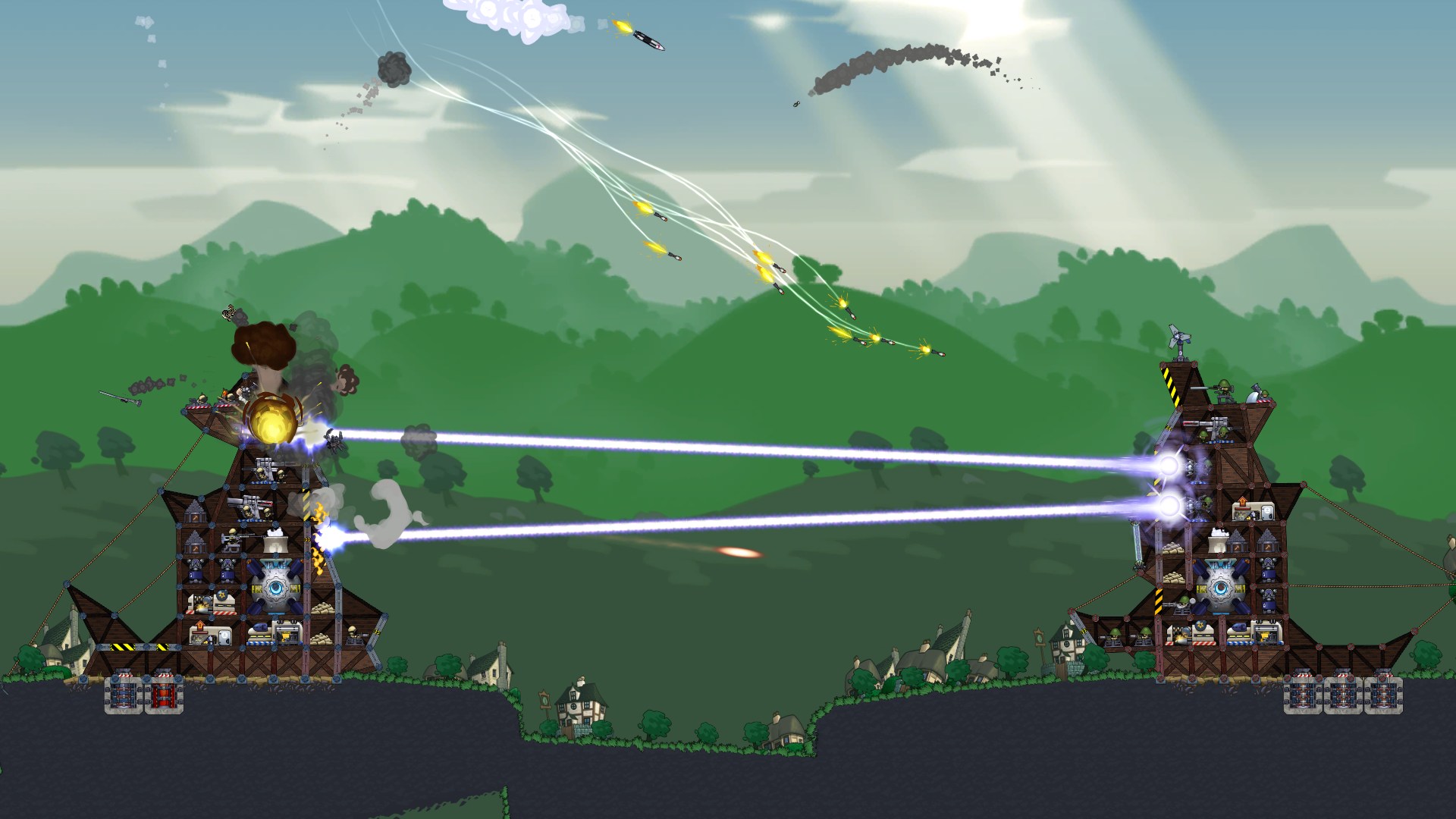
I somehow completely missed Forts by EarthWork Games this year. I had never even heard of it until PAX West when I sat down with some friends in the PC gaming area and we noticed Forts was one of the available games. What followed over the next 20 minutes was a lot of confusion, a lot of laughter and a lot screaming as the 6 of us tried desperately to build forts that wouldn’t just immediately fall over but that could also blow the other team’s fort away.
Forts describes itself as a “a physics-based action RTS” and I’d say that’s pretty accurate. The general premise is that you and your opponent(s) start with a small wooden fort protecting a central core that provides both power and metal, the two resources of the game. You must then build out your fort, create more mines, place wind turbines and construct weapons to begin attacking your opponent’s fort who is doing the exact same thing. There’s a campaign, skirmishes against the AI, online multiplayer and a recently added workshop for downloading community levels.
There’s a nice little campaign to play through that will teach you the basics at the start and then will slowly ramp up the challenge to some nice little puzzles at the end. While nice, I think the tutorials took it a step too far when they started explicitly, step by step, explaining what to build, where to build and what to shoot. I would have appreciated more hands off teaching from the game. There’s also a lot of not so subtle political commentary jokes being thrown around in the campaign between the Eagle army, Bear army and Dragon army. While some of the jokes got a chuckle out of me the story here probably won’t age very well.
The graphics are relatively simple 2D graphics but they get the job done and they do a good job of conveying the required information to you when everything is burning down and you’re in a panic. The sounds as well are good and can actually be quite helpful when they help you to distinguish who is firing what and if they are hitting their targets. You can’t always keep your eyes on the whole battlefield and the sounds do help here.
The gameplay of Forts is where I’m the most divided about this game. Forts reminds me a lot of Worms Armageddon actually.1 A game I loved. It’s similar to Worms in many ways but crucially you can’t actually move around because, well, you’re a static fort. And because the maps tend to be mirror images of each other this means that both players are basically always making the same decisions and executing the exact same moves.
In Worms you’d be placed in random positions across a procedurally generated map and you were given lots of tools to move around to take advantage of the battlefield around you. In Forts every player has access to the same weapons, the same construction materials and the exact same starting structures, just on different sides of a mirrored map. This tends to limit the meaningful choices one can make on any one map to effectively gain a lead. Combine that with some of the larger maps where lower tech weapons can’t even reach your opponent and games start to devolve into a match to see who can place a laser first. There just isn’t enough variety in the available weapons to make up for the lack of mobility being a fort forces upon you. Players can choose different commanders with some passive buffs to resource collection or reload times but it just isn’t enough. What I would have loved to see is multiple factions with different building materials, different fort building strategies, weapons and defense tactics. I realize that game design wise it means at least twice the work plus balancing issues but I think that’s what’s really needed in the land of RTS games to move from good to great.
Which really is a shame since I think there’s some really nice weapons and gameplay design in Forts. I love the fact that just blindly upgrading your weapons isn’t always the best choice. In too many RTS games you always just click the upgrade button because why wouldn’t you. But in Forts there’s always a tradeoff between the lower class weapon and the upgraded one. Upgrading machine guns to mini guns means they’ll do lots more damage, especially to armor, but they won’t auto fire at mortars and missiles anymore, meaning you’ll lose out on a lot of defensive capability. Upgrading swarm missiles to nukes means they do way more damage but an unprotected nuke will just get shot down by machine gunners every time. You actually have to have a mix of all the available units to have an effective fort and I think that’s a brilliant design choice on the developers part.
I enjoyed Forts while the novelty of it lasted. The mix of physics based fort building, real time strategy with active offense where you have to aim every weapon and a nice mix of maps is really fun. The campaign was fun to play through for a few hours and the AI provides a nice challenge for you in skirmish mode as well. With some, admittedly major, changes to differentiate the two sides I think Forts could be not just good but great. If you’re at all looking for a Worms like game or just a new RTS to try out give this one a shot.
I would link to the official site but I think it’s literally from the 90’s. ↩
Powered by what eventually became known as “Digicel” technology, along with a solid selection of middleware and some impressive talent, Aladdin managed to set itself apart from other Genesis titles of the era. Aladdin’s beautifully hand-crafted, surprisingly well-quantized artwork set new expectations for many in the realm of what could be accomplished on Genesis hardware. It did so not by leveraging any particularly fancy raster effects or obscure hardware techniques, but rather by pairing effective artwork and design with just the right technology.
A wonderful deep dive into Aladdin. I wish every game could have this kind of history shared.
Good introduction to what it takes to make something render at 60 FPS on a modern computer. I feel like there’s probably a lot more in modern game engines that could be shared with the rest of the computer engineering community but I’m always glad to see progress being made.
I liked this article by Simon Parkin.
Except, of course, aside from its pre-set storyline, Grand Theft Auto doesn’t prescribe any of these things. It merely offers us a playpen, one that, like our own cities, is filled with opportunities, and arbitrated by rules and consequences. And unless you’re deliberately playing against type, or are simply clumsy, you can’t help but bring yourself into interactive fiction. In Grand Theft Auto, your interests and predilections will eventually be reflected in your activity, be it hunting wild animals, racing jet-skis, hiring prostitutes, buying property, planning heists, or taking a bracing hike first thing in the morning. If you are feeling hateful in the real world, the game provides a space in which to act hatefully. As the philosophers say: wherever you go, there you will be.
I would have picked a different opening example than GTA though. Saying GTA has meaningful choices is a bit too cliche for me at this point. Ever try to follow the law in a GTA game? Yeah, let me know how that works.
Sadly, I still do not own a SNES Classic and I think that says all you need to know for my feelings towards this little box of nostalgia. I wasn’t too interested in the NES Classic mostly because I just don’t think those games hold up as well today as the SNES ones do.1 I also wasn’t interested because for me, gaming began with the SNES. The SNES, with Super Mario Kart specifically, is the first video game console I can remember playing. I don’t think I’ve ever actually stopped playing SNES games either and the other day I was fortunate to have the privilege of trying one out with some co-workers.
The device is surprisingly small actually, way smaller than an actual SNES but I would say it’s a very faithful replica. It comes with two controllers out of the box which is very welcome because the SNES has some great two player games. The controllers are exactly as I remembered them and other than the plug on the end being different I can’t tell the difference. The menus are pretty bare bones but do a decent job of letting you pick between games, choosing display settings and making save states. The games themselves run exactly as you would expect and just how I remember them. I didn’t notice any emulation problems graphical, audio or otherwise for the few hours we were playing. Exactly as it should be.
With the SNES Classic coming bundled with Star Fox, Super Mario World, Contra III, Street Fighter, Link to The Past, F-Zero, Super Metroid and probably one of my favorite games of all time, Donkey Kong Country, it’s really hard for me to ignore.2 Not to mention a bunch more games I haven’t played that by all accounts are great games in and of themselves and $80 seems like a steal. If only Nintendo would make more than 10 of these things.
I actually think the SNES era might be the sweetspot for these “Classic” consoles. I think it’s pretty much a given we’ll see an N64 Classic some day but in the days of amazing modern 3D graphics I think the N64 will look especially bad, even compared to the bright and vibrant SNES. ↩
I’m kind of dissapointed all three Donkey Kongs aren’t on this console because they’re all great but I’m probably biased there. In fact, I think Nintendo should have thought a little harder about how players might get more games onto this box in an official capacity since while the game selection is awesome I do feel like some were left out that I would gladly buy again if I could. Maybe a “cart” that came with 25 more games and fit in the slot up top? ↩

Golf Story by Sidebar Games is a cute retro styled RPG about a man following his dreams of becoming a pro golfer. It’s also the first comedy game I have played in a long, long time while also being the first golf game I’ve played since Mario Golf on the GameCube.
Golf Story does a great job of introducing the player to the mechanics and rules of golf. It eases you into all of the concepts of hitting a drive, laying up, and putting all in the first few minutes of the game. Actually hitting a ball involves the classic golf game controls of choose a club, aim, then, with a moving marker, set power and precision. These controls will be immediately familiar to anyone who’s ever played a golf game before but they’ll also be intuitive enough for everyone to pick up and start playing. More advanced golf concepts like putting break, loft, spin, and hazards are all introduced at a good pace throughout the game to keep things interesting as you progress. There’s also a few power ups you can acquire which are pretty situational but can be nice to use if you’re in a pinch.
Off the course you’re able to run around, talk to people, interact with lots of different objects, and hilariously, tee up a ball at any time. The game uses this tee up feature to great effect for everything from giving out little bits of bonus XP and money when you hit random things to solving more advanced puzzles to unlock better equipment or new side quests.
There’s 8 unique 9 hope golf courses throughout the game all with their own clubhouse areas, themes, local npcs and music. You’ll be playing on each of these courses multiple times throughout the game, sometimes solo, against opponents or in tournaments. There’s also lots of little mini game style tasks you can do, all golf related of course, such as mini golf, and even disc golf.
The graphics are definitely retro with a 16 bit SNES style to them. Some features are oddly not sprite based such as text bubbles and course flags in the HUD. They always stuck out like a sore thumb to me. The oddest for me was each golf course’s flag which was oddly high res and animated compared to the rest of the elements on screen. I noticed it, but it never really distracted too much.
I feel like I should mention the text because even though it’s not pixelated like the rest of the game, the bubbles are very dynamic adding a great sense of playfulness to the game. A lot of comedy comes down to timing and the devs clearly know this and utilize their text bubbles to maximum effect that you rarely, if ever, see in games. For a game with story in the title it does an excellent job of presenting that story.
The music and sound effects in the game are great too. Each course has its own theme song and there’s at least two different songs per course that you’ll hear as you play the holes. It could have been repetitive given how much of this game is golfing or the music could just be really generic such that it fades away but I’m glad to say it isn’t. I want to call out the awesome theme that plays when you’re putting because what it was was very surprising but somehow also fitting at the same time. But no spoilers, so I’m not even going to describe it here.
The story itself is actually pretty straightforward with no massive twists or turns but it does do a good job of taking you through the game’s courses and locales and talking to lots of people which is where the comedy really shines. The devs will also use the story to set you up with handicaps. Just when you think the matches might be getting easy you’ll get partnered up with a horrible golfer and be left fixing their mistakes the whole match.
Golf Story surprised me to be honest. I didn’t expect to be playing a retro golfing RPG on the Switch but here I am, and I really enjoyed it too. Golf Story manages to deliver an excellent golfing game wrapped up in a compelling and funny story filled with a diverse cast of characters that I couldn’t put down until it was done.
Matt Walker helped translate an amazing technical talk given by the Breath of the Wild development team last month. If you’re at all interested in game design check it out.
Jerry Rig Everything has this neat video about modding your Switch and joycons to have clear plastic cases. Reminds me of the clear purple Gameboy Advance I used to have. Loved that thing.
I thought I was done with Breath of the Wild. I’d conquered all the Divine Beasts, defeated Ganon and saved Princess Zelda. Master Mode has surprised me though.
The first half of Nintendo’s DLC for BOTW felt a little shallow at first if I’m honest. The Master Trials were interesting at first but didn’t really keep me engaged enough to even see them all the way through. The collectables like the Korok Mask and the new outfits were kind of neat but if Nintendo thinks I’m going to go hunt down every last Korok seed now they are wrong. What’s the point of charging up the Master Sword or collecting more collectables when I’ve already defeated Ganon? It’s not like this game has an end game. All told I had picked up and put down the Master Trials in probably about an hour.
Master Mode though, is actually interesting and challenging. I actually died in my first hour of playing, and not on purpose either. In Master Mode every enemy has been ranked up which not only makes them hit harder but also makes them way tougher to kill. I’m just burning through weapons right now at a pace that I don’t think I can keep up. Before, in normal mode, a weapon might have lasted for 3 or 4 enemies but I’m currently using weapons at a pace of about 1 to 2 weapons per enemy. This means I’ve already been forced to use what limited powers I have on the Great Plateau for even the most basic encounters. Something that I never had to do in normal mode.
There’s also flying platforms now that use octoroks to get a height advantage over you. It’s relatively simple to dispatch them if you’re quick enough but when the archers up above start firing fire arrows back at you, excuse the pun, but you definitely feel the heat. Finally, despite the normal enemies being way tougher they’ve gone and added tough enemies where there were none before. There’s a lynel on the great plateau, right next to the forest near the shrine on the cliffs. I thought I was being clever sneaking around but this guy saw me and promptly fired a 5 shot of bomb arrows at me. I was so amazed I didn’t see him sneak up behind his own smoke screen he had created to loose another volley at me.
I’m not sure I want to devote another 100+ hours to BOTW again but after just a few hours of Master Mode I’m sitting here wondering “what else did they change”. Even if you only consider Master Mode I think Nintendo succeeded in adding real value to Breath of the Wild with part 1 of their DLC and now I’m really looking forward to what part 2 might bring.